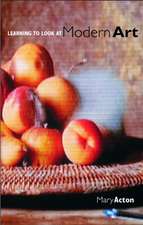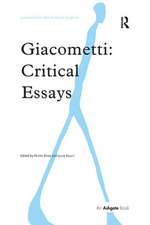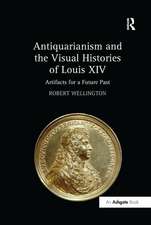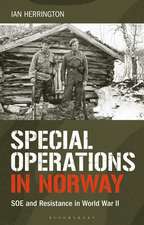The Literariness of Media Art
Autor Claudia Benthien, Jordis Lau, Maraike M. Marxsenen Limba Engleză Hardback – 18 sep 2018
Preț: 771.54 lei
Preț vechi: 1031.72 lei
-25% Nou
Puncte Express: 1157
Preț estimativ în valută:
147.67€ • 152.18$ • 124.67£
147.67€ • 152.18$ • 124.67£
Carte tipărită la comandă
Livrare economică 03-17 martie
Preluare comenzi: 021 569.72.76
Specificații
ISBN-13: 9781138091511
ISBN-10: 1138091510
Pagini: 332
Ilustrații: 122 Halftones, black and white
Dimensiuni: 178 x 254 x 28 mm
Greutate: 0.86 kg
Ediția:1
Editura: Taylor & Francis
Colecția Routledge
Locul publicării:Oxford, United Kingdom
ISBN-10: 1138091510
Pagini: 332
Ilustrații: 122 Halftones, black and white
Dimensiuni: 178 x 254 x 28 mm
Greutate: 0.86 kg
Ediția:1
Editura: Taylor & Francis
Colecția Routledge
Locul publicării:Oxford, United Kingdom
Public țintă
Postgraduate and UndergraduateCuprins
List of Figures1 Introduction
Preface and Acknowledgements
A Literary Approach to Media Art | Russian Formalism and Neoformalism | Reflecting Terminology: Media Art and Its Categories | Four Artistic Approaches: About the Structure of This Book2 Literariness and Media Art: Theoretical Framing
2.1 The Aesthetics of Language: Literary Theory3 Voice and Script in Media Art
The Obstreperousness of Poetic Language | Art as Device: Estrangement and Complicating Form | Poetics of Deviation | The Palpability and Performativity of Poetic Language | Ambiguity and the Split Sign
2.2 Literariness Beyond Literature: Transdisciplinary Perspectives
Literariness and Ostranenie in Audiovisual Arts | Russian Formalism and Film | Technology as Device | The Poetics of Neoformalism | Literariness Between Media | Overabundance, Excess Emptiness, and Retreat of Synthesis | Medial Opacity and Perception
3.1 Voice and the Materiality of Sound4 Literary Genres in Media Art
The Voice as Medium and the Mediatized Voice | Sound Poetry and Transrational Language | Iteration and the Alphabet as Aesthetic Devices | The Performative Power of the Acousmatic Voice | Technical Alienation of the Voice | Voice and Image, Voice and Script
3.2 Script – Between Visuality and Legibility
Russian Formalism and the Written Word | Script between Transparent Representation and Palpable Body | Script as Image / Script in Images | Written Words in Film | Recognition versus Seeing | Framing as Aesthetic Device | Playing With Words | Writing On and With Bodies
4.1 Elements of Poetry5 Works of Literature in Media Art
Poetry as a Literary Genre | Excess Structuring: Language Use in Poetry | Vertical Compositions: Poetic Structures in the Audiovisual Arts | Lyric Subjectivity | Visual Poetry and Media Art | Poetical Practices and Lyrical Speech in Media Art | Poetic Images: Experimental Video Poems
4.2 Elements of Drama
Drama Theory and Media Art | Core Elements of Drama | Ostranenie and the Alienation Effect | Features of Postdramatic Theater | Dialogic and Performative Installations | Theatrical Overabundance: Playing with the Theatrical Frame | Citing Elements of Classical Tragedy
4.3 Elements of Prose
Narrative Prose and Time-Based Media | Narrative Order, Narrative Integration: fabula and sužet | Narrative Voice – the Mediating Instance | Narrative Mode: Perception and Perspective | Variations on First Person Narration in Media Art | Autobiography as Act and Device | Audiovisual Explorations of Epistolary Fiction
Adaptation as Appropriation | Intertextual Dialogism | Adaptation, Translation, Transcription | Adaptations as Deviant Derivatives | Voice and Sound: Acousmatic Adaptations | Baring the Signifier: Written Allusions | Aesthetics of Superimposition I: Reflecting Memory | Aesthetics of Superimposition II: Queer Defamiliarizations | Theatrical Appropriation: Personifying Literary Figures | Poetics of Quotations: The Literary in Performative Installations6 Conclusion
Bibliography
Featured Works
Formal Remarks
Notă biografică
Claudia Benthien is Professor for German Literature and Cultural Theory at the University of Hamburg, Germany.
Jordis Lau is a PhD candidate at the University of Hamburg, Germany.
Maraike M. Marxsen is a PhD candidate at the University of Hamburg, Germany.
Jordis Lau is a PhD candidate at the University of Hamburg, Germany.
Maraike M. Marxsen is a PhD candidate at the University of Hamburg, Germany.
Recenzii
"The Literariness of Media Art provides a powerful theoretical framework for the discussion of the unruly powers of media art. Inspired by the Russian concept of ostranenie ('making strange') coined in the heyday of early cinema and the avant-gardes, the authors prove to be sensitive to the techniques used in the arts to deautomatize and deepen perception. They reveal unexpected political dimensions within a seemingly aesthetically oriented topic, as made obvious in their analyses of the quirky language used in the artworks under discussion."
Annie van den Oever, University of Groningen, the Netherlands "This book traces constellations of art practice across a wide and often surprising arrangement of media formats and formal methods. The result is a creative-critical patchwork that invites readers to think differently, not only about the individual works discussed in its chapters, but also, more reflexively and significantly, about how to think about art and literariness."
Jessica Pressman, University of San Diego, USA
"In a time where ideas of multimedia art, media specificity, and intermediality again flourish, it is refreshing to be reminded of the heritage in art and literary history, and how media art from the 1960s and onwards can be seen as a precursor to much of the contemporary art and literature across analogue and digital media. The Literariness of Media Art is essential reading for anyone interested in media arts, intermedia, and the future of art and literature."
Hans Kristian Rustad, University of Oslo, Norway
"In studying and re-defining the notion of 'literariness', The Literariness of Media Art gives us vivid insights into how media art investigates and appropriates literature and literary perceptions. The book brilliantly develops these perspectives into new and hitherto unforeseen paths, and shows us that literature still matters in a time of new media. The literary experience, therefore, is far from just something that happens in books, but is also a phenomenon we can trace and think of in and between (new) media.”
Stefan Kjerkegaard, Aarhus University, Denmark
Annie van den Oever, University of Groningen, the Netherlands "This book traces constellations of art practice across a wide and often surprising arrangement of media formats and formal methods. The result is a creative-critical patchwork that invites readers to think differently, not only about the individual works discussed in its chapters, but also, more reflexively and significantly, about how to think about art and literariness."
Jessica Pressman, University of San Diego, USA
"In a time where ideas of multimedia art, media specificity, and intermediality again flourish, it is refreshing to be reminded of the heritage in art and literary history, and how media art from the 1960s and onwards can be seen as a precursor to much of the contemporary art and literature across analogue and digital media. The Literariness of Media Art is essential reading for anyone interested in media arts, intermedia, and the future of art and literature."
Hans Kristian Rustad, University of Oslo, Norway
"In studying and re-defining the notion of 'literariness', The Literariness of Media Art gives us vivid insights into how media art investigates and appropriates literature and literary perceptions. The book brilliantly develops these perspectives into new and hitherto unforeseen paths, and shows us that literature still matters in a time of new media. The literary experience, therefore, is far from just something that happens in books, but is also a phenomenon we can trace and think of in and between (new) media.”
Stefan Kjerkegaard, Aarhus University, Denmark
Descriere
This volume uses as its foundation the Russian formalist school of literary theory, with the goal of extending these theories to include contemporary concepts in film and media studies, such as neoformalism, intermediality, remediation, and post-drama.









